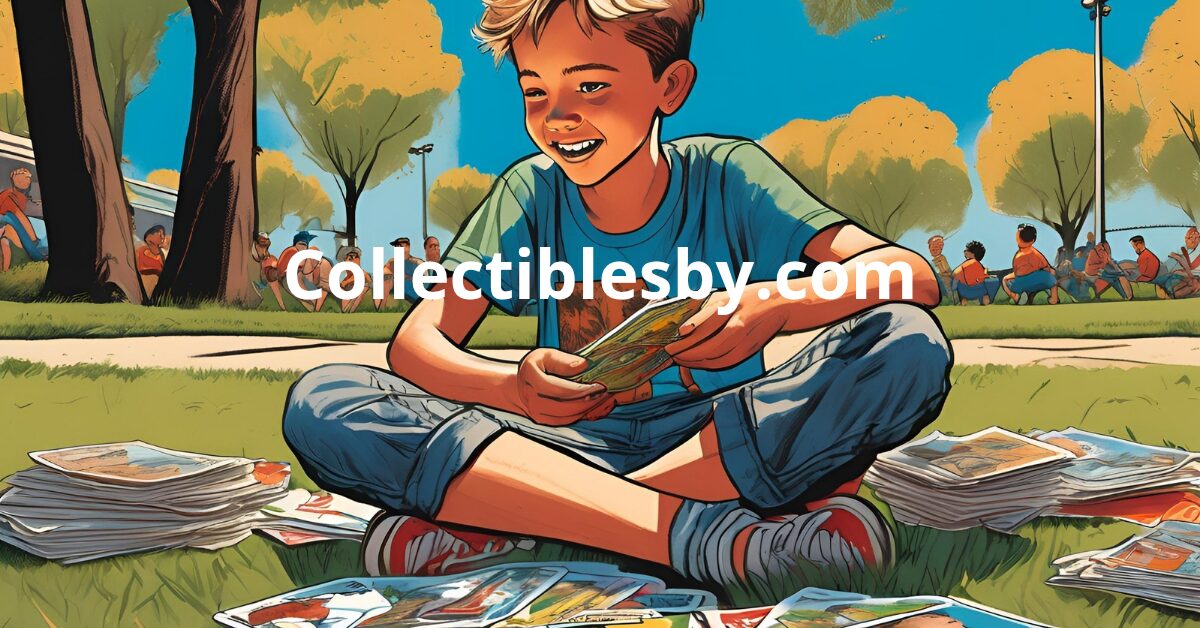The Spark: Card Collecting, A Childhood Discovery
The year you turned 11 was a watershed moment. It wasn’t just another birthday; it was the year you discovered the captivating world of baseball cards. Perhaps it was a pack you received as a gift, a chance encounter at a local store, or a friend who introduced you to the thrill of opening those wax-paper packets. Regardless of the origin, the spark was ignited.
At 11, the world is a kaleidoscope of new experiences, and baseball cards offered a tangible connection to the heroes of the diamond. These weren’t just pieces of cardboard; they were miniature portraits of legends, future stars, and the players who fueled your imagination. Each card told a story, a snapshot of a player’s career, a statistical glimpse into their performance.
The initial allure was likely visual. The vibrant colors, the action shots, and the player autographs (even printed ones) were captivating. You probably spent hours poring over the cards, memorizing player names, team logos, and batting averages. The tactile experience of handling the cards, the crisp snap of opening a new pack, and the distinctive smell of fresh cardboard added to the sensory delight.
Building a Collection: The Early Years
Your collection began organically. You might have started with a shoebox, a binder, or a dedicated card album. The thrill of acquiring new cards was paramount. You probably traded with friends, visited local card shops, and begged your parents to buy you more packs. Each addition felt like a victory, a step closer to completing your dream collection.
At this stage, the focus was likely on quantity rather than quality. You wanted as many cards as possible, regardless of their rarity or value. You might have been particularly drawn to star players, like Ken Griffey Jr., Cal Ripken Jr., or whoever dominated the headlines during your formative years. Local favorites and players from your favorite team also held a special place in your heart.
The social aspect of collecting was also significant. Trading with friends was a cornerstone of the hobby. You’d compare collections, negotiate deals, and boast about your prized possessions. These interactions fostered camaraderie and a sense of belonging within a community of fellow enthusiasts.
The Evolution of a Collector: Strategy and Knowledge
As you matured, your approach to collecting likely evolved. You began to understand the nuances of the hobby, realizing that not all cards were created equal. You learned about rarity, condition, and market value.
The concept of “sets” became important. You might have set your sights on completing entire sets of cards from a particular year or brand. This required meticulous planning, careful trading, and strategic purchases. You started to recognize the importance of card condition, learning the difference between “mint,” “near mint,” and “damaged.”
Your knowledge of baseball also deepened. You began to appreciate the statistical side of the game, understanding the significance of batting averages, home run totals, and earned run averages. This knowledge enhanced your enjoyment of the cards, as you could connect the player’s performance on the field with their representation on the cardboard.
The internet’s emergence further transformed your collecting experience. Online forums and marketplaces opened up a world of possibilities. You could connect with collectors from around the globe, buy and sell cards with ease, and research player statistics and card values.
The Nostalgia Factor: Memories and Sentimental Value
Baseball cards are more than just collectibles; they are time capsules. They evoke memories of childhood, of summers spent watching baseball games, and of the players who inspired you. Each card holds a story, a connection to a specific moment in your life.
Looking through your collection, you might stumble upon a card of a player you idolized as a child, or a card that reminds you of a memorable game you attended. These cards trigger a wave of nostalgia, transporting you back to a simpler time.
The sentimental value of your collection often outweighs its monetary worth. The cards represent a tangible link to your past, a reminder of your passion for baseball and the joy of collecting.
The Modern Era: Changes and Challenges
The baseball card industry has undergone significant changes in recent decades. The rise of premium cards, autographed memorabilia, and limited-edition releases has transformed the market. The focus has shifted from mass-produced cards to high-end collectibles.
The internet has also played a crucial role in shaping the modern era of collecting. Online auctions and marketplaces have made it easier to buy and sell cards, but they have also introduced new challenges. Counterfeiting and fraud have become more prevalent, requiring collectors to be vigilant and informed.
The hobby has also faced challenges in attracting younger collectors. The rise of video games and other forms of entertainment has diverted the attention of many children. However, the passion for baseball cards remains strong among dedicated collectors.
The Enduring Appeal: Why We Collect
Despite the changes and challenges, the appeal of baseball cards endures. The hobby offers a unique blend of nostalgia, strategy, and social interaction. It connects us to the history of baseball, allows us to express our passion for the game, and fosters a sense of community.
Collecting baseball cards is a journey, a lifelong pursuit of knowledge, memories, and camaraderie. It’s about more than just accumulating pieces of cardboard; it’s about building a collection that reflects your personal history and your love for the game.
Expanding the Collection: Strategies and Focus
As you continued to collect, what strategies did you employ? Did you focus on specific players, teams, or years? Did you prioritize condition over quantity?
- Player Focus: Did you concentrate on collecting every card of your favorite player? This could involve tracking down rookie cards, variations, and autographed editions.
- Team Focus: Did you aim to complete sets of your favorite team’s cards from different years? This could involve collecting cards of legendary players and rising stars.
- Year Focus: Did you try to assemble complete sets from specific years that held special significance for you? This could involve focusing on years when your favorite team won the World Series or when a particular player had a breakout season.
- Rarity Focus: Did you concentrate on acquiring rare and valuable cards, such as error cards, short prints, or autographed memorabilia? This could involve extensive research and strategic purchases.
- Condition Focus: Did you prioritize the condition of your cards, seeking out high-grade examples that would retain their value over time? This could involve careful inspection and grading.
The Emotional Connection: More Than Just Cards
Beyond the tangible aspects of collecting, there’s a deep emotional connection that drives many collectors. Baseball cards can evoke a sense of nostalgia, reminding us of our childhood and the players we idolized. They can also represent a connection to our family and friends, as we share our passion for the hobby with others.
- Family Ties: Did you collect with your parents, siblings, or grandparents? Did you inherit a collection from a family member? These experiences can create lasting memories and strengthen family bonds.
- Friendships: Did you form friendships through trading and discussing baseball cards? Did you attend card shows or conventions with fellow collectors? These interactions can create a sense of community and belonging.
- Personal Achievement: Did you experience a sense of accomplishment when you completed a set or acquired a rare card? Did you take pride in the organization and presentation of your collection? These achievements can boost your self-esteem and provide a sense of purpose.
The Future of Collecting: Adapting and Evolving
The baseball card industry continues to evolve, adapting to the changing landscape of technology and consumer preferences. The rise of digital collectibles and non-fungible tokens (NFTs) has introduced new possibilities for collectors.
- Digital Cards: Are you interested in digital baseball cards and NFTs? Do you see them as a complement or a replacement for traditional cards?
- Online Communities: Do you participate in online forums and social media groups dedicated to baseball card collecting? These platforms can provide a valuable resource for information and networking.
- Card Shows and Conventions: Do you still attend card shows and conventions? These events can provide an opportunity to buy, sell, and trade cards, as well as to meet fellow collectors.
The Legacy of Your Collection: Sharing the Passion
As you reflect on your years of collecting, consider the legacy you want to leave behind. Will you pass your collection on to your children or grandchildren? Will you donate it to a museum or historical society?
- Preservation: How do you plan to preserve your collection for future generations? Do you use archival-quality sleeves and storage boxes?
- Sharing: Do you enjoy sharing your collection with others? Do you display your cards in albums or frames?
- Education: Do you use your collection to teach others about the history of baseball and the hobby of collecting?
Collecting baseball cards is a journey of discovery, a lifelong pursuit of passion and memories. It’s a hobby that transcends generations, connecting us to the past, present, and future of baseball. It’s a story that continues to unfold, one card at a time.

